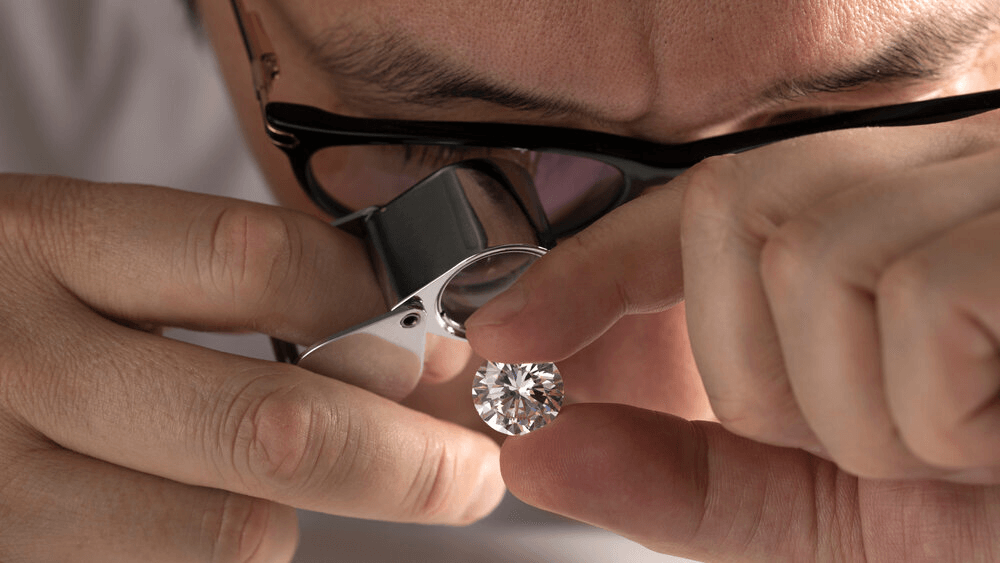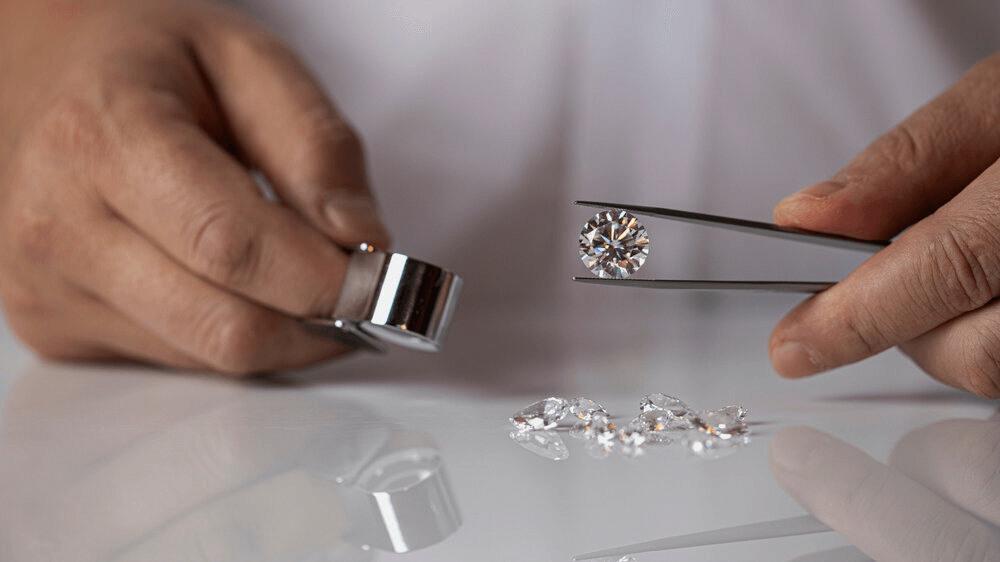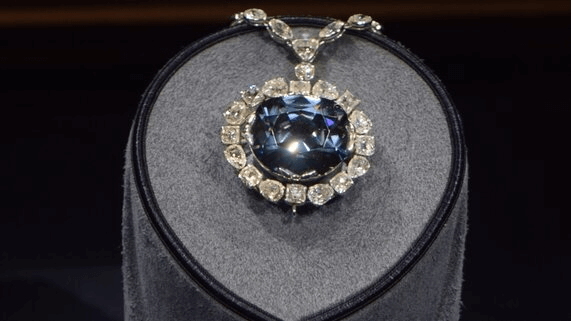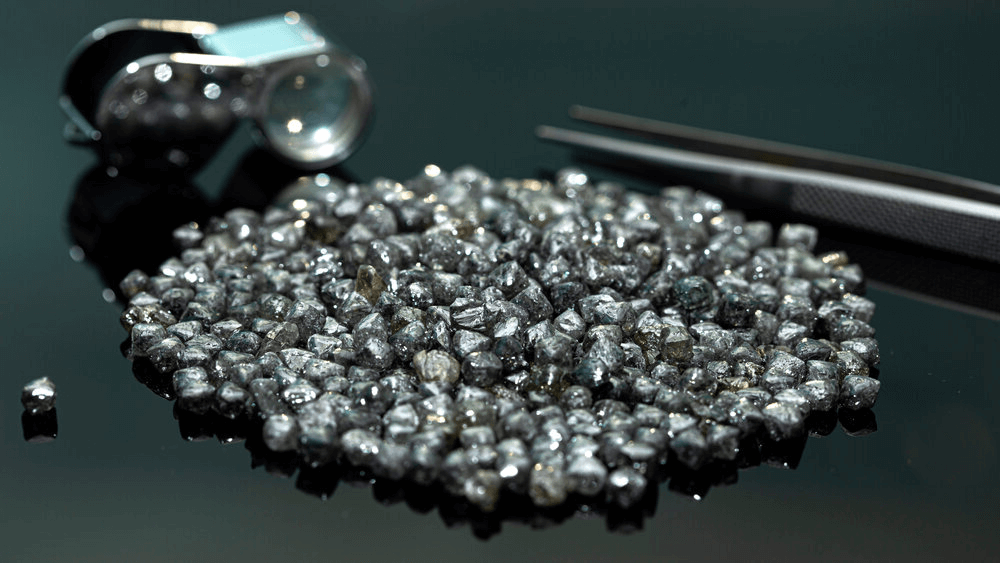Discover the Magic of Aztec Jewelry

By Gary A.

Edited by Olivia H.
Published Aug 8, 2024
Edited on Mar 31, 2025
Aztec jewelry comprises some of the most iconic and beloved motifs and designs in human history. Here’s a whistle-stop tour of its legacy…

Navigate This Guide:
- 7 Quick Tips for Buying a Diamond Engagement Ring Inspired by Aztec Jewelry
- Introduction to Aztec Jewelry
- The Cultural Significance of Aztec Ornaments
- The Artistry of Aztec Jewelry
- Aztec Jewelry in the Diamond Industry
- Our Expert Take: The Timeless Appeal of Aztec Jewelry
- 7 Frequently Asked Questions about Aztec-Inspired Diamond Engagement Rings
Before we dive deeper into the specifics, here are some practical tips to help guide your decision-making process:
7 Quick Tips for Buying a Diamond Engagement Ring Inspired by Aztec Jewelry
When selecting a diamond engagement ring that echoes the enchanting designs of Aztec jewelry, it’s crucial to delve beyond the traditional 4Cs (Cut, Clarity, Color, Carat). The intricate Aztec motifs and symbolism can add a layer of historical richness and personal significance to your ring. Here are tailored tips to guide you through this unique fusion of ancient artistry and modern elegance.
- Tip 1: Consider Symbolic Aztec Motifs
- Aztec jewelry is replete with symbols representing gods, natural elements, and cosmic beliefs. When choosing an engagement ring design, look for motifs that resonate with you and your partner’s story. For instance, the Aztec calendar, or Sun Stone, symbolizes the universe’s harmony and can be a powerful emblem of your union’s timelessness and continuity.
- Tip 2: Embrace the Richness of Mixed Metals
- Aztec artisans skillfully combined various metals to create visually stunning pieces. For a contemporary ring with an Aztec twist, consider designs that incorporate mixed metals, such as a yellow gold band with a platinum or white gold setting. This not only adds depth to the design but also pays homage to the Aztec tradition of metalwork.
- Tip 3: Integrate Colored Gemstones
- The Aztecs valued vibrant colored stones, with turquoise being particularly significant due to its representation of life-giving water and the heavens. Incorporating colored gemstones like emeralds or sapphires alongside or instead of diamonds can infuse your engagement ring with Aztec-inspired vitality and meaning.
- Tip 4: Explore Geometric Shapes and Symmetry
- Aztec art and architecture celebrated geometric shapes and symmetrical patterns. Look for engagement rings that feature bold, angular cuts or symmetrical designs reminiscent of Aztec aesthetics. A princess or emerald-cut diamond can mirror this style, offering a nod to Aztec precision while maintaining modern elegance.
- Tip 5: Opt for Handcrafted Details
- Aztec jewelry was meticulously handcrafted, with artisans pouring their skill and devotion into each piece. Seek out rings that feature hand-engraved patterns or filigree work that mimic the intricate designs of Aztec art. Handcrafted details not only add a personal touch but also echo the craftsmanship of Aztec jewelers.
- Tip 6: Prioritize Ethical Sourcing
- In line with the reverence the Aztecs had for the natural world, ensure that the materials used in your engagement ring are ethically sourced. Opt for diamonds and gemstones that are conflict-free and sourced with respect for the environment and human rights. This aligns with the spiritual and moral values that were central to Aztec culture.
- Tip 7: Incorporate Personal or Cultural Significance
- Aztec jewelry often held personal or cultural significance. Consider customizing your engagement ring with inscriptions or design elements that hold special meaning for you and your partner. This could be a date, a phrase in Nahuatl (the Aztec language), or a symbol that represents a shared interest or value.
Now that you’ve got these practical tips, use Jeweler AI below to find the perfect engagement ring that suits your style and budget:
Introduction to Aztec Jewelry
The jewelry industry is undoubtedly a well-oiled machine in 2024. With expert mining operations, diamond cutting centers, and numerous trading hubs around the world, there has never been more choice and more beauty on offer to every buyer. Amidst this modernity and sophistication, however, it’s worthwhile to sit back and reflect on how it all started.
The roots of jewelry-making stretch back millennia into the annals of human history, with Aztec jewelry, in particular, standing as a testament to ancient craftsmanship and cultural richness. There might not have been a fully-formed ‘industry’ back then, but Aztec jewelry has survived the test of time to become a benchmark in meaningful jewelry-making, with some designs still being used today.
The Dawn of Aztec Adornments
The Aztecs themselves reigned from the 14th to the early 16th centuries. Jewelry, of course, has been around far longer than that, but it’s with the Aztecs that it really began to sparkle.
During these centuries, the Aztecs adorned jewelry pieces to not only showcase beautiful, decorative accessories but to take advantage of their profound cultural and spiritual significance. Every piece of jewelry, whether it be a ring or a headdress, was imbued with symbols representing gods, cosmological principles, and the natural world.
Materials and Craftsmanship
One of the reasons Aztec jewelry is still so respected in 2024 is because of the materials and craftsmanship used to create it. Aztec artisans were the masters of their craft, employing several sophisticated techniques to work with the materials that they had and form them into something stunning. Utilizing lost-wax casting, filigree, and inlay methods, they were able to form iconic designs depicting animals, plants, shapes, and gods.
Lost-wax casting, in particular, was a technique perfected by the Aztecs, involving creating intricate molds from beeswax and filling them with molten metal – such as gold, silver, or copper. The inlay methods mentioned were also the reason behind the striking Aztecian colors that we recognise today, with jewelers using materials like turquoise, jade, shell, and coral to cut into metal settings and create striking compositions.
The Cultural Significance of Aztec Ornaments
Staying with inlay methods for a second, this wasn’t just a way to imbue jewelry with color and turn the heads of buyers in the markets, it was a way to imbue deeper symbolic meaning into the pieces themselves, with turquoise, jade, shell, and coral representing everything from fertility, prosperity, and spiritual protection.
As mentioned previously, for the Aztecs, the cultural significance of jewelry was just as important as the visual beauty. Whether it was ceremonial attire, a necklace, or a ring, Aztect ornaments were used as a way to demonstrate values and beliefs. This included radiating a sense of power.
Symbols of Status and Power
Aztec jewelry served as a potent symbol of status within Aztec society, reflecting hierarchical structures and social distinctions through visuals alone. Aztec society was highly stratified, of course, with distinct social classes ranging from rulers and nobles to warriors, priests, artisans, and commoners.
Jewelry would play a crucial role in denoting these hierarchies, demonstrating higher status and power in a way that could be immediately impactful. In cities like Tenochtitlan and Tlatelolco, in particular, adorning metals like gold or silver – with gemstones like turquoise or jade – would be a clear symbol of wealth, divinity, and ancestral lineage. One glimpse of a beautiful necklace or a solid gold ring and your importance would be recognised.
Spiritual and Ceremonial Roles
Apart from wealth and power, Aztec jewelry was also profoundly spiritual, to the point where it was given a regular ceremonial role. Not only would priests and nobles adorn themselves with elaborate jewelry dedicated to deities like Huitzilopochtli – the god of the sun – and Tlaloc – the god of rain – it would also be used as an offering to appease and honor various gods in religious ceremonies.
In many cases, jewelry pieces would be placed on altars dedicated to specific gods, with priests accompanying their offerings with prayer, incense, and ritualistic chants. In the same way that we still see immense value in jewelry today – often still spiritual and symbolic value – they saw even more value all those centuries ago, making it a crucial part of everyday Aztec life.
The Artistry of Aztec Jewelry
If you strip all of that cultural and symbolic meaning back, however, what you’re left with is a marvel of what humans can achieve even without all the tools and processes that we have today. In terms of artistry, Aztec jewelry was second to none, with the methods undertaken by jewelers requiring an outstanding creative eye and a whole lot of skill! Some of the techniques we’ve already talked about above, but there were many more that demonstrate their expert craftsmanship.
Techniques in Jade and Gold
One of them was their ability to source and carve jade. Jade was a highly prized stone in Mesoamerican cultures, with jewelers having to source it primarily from Guatemala – a country now known as Mexico! Throughout the sourcing process, Aztec artisans would meticulously select jadeite and nephrite stones based on their color, clarity, and texture, much in the same way that modern jewelers ascertain diamond value today.
Using nothing but stone tools, obsidian blades, and abrasive sands, they would then carve the jade into intricate shapes and forms, utilizing primitive drilling techniques to create perforations for threading. Once this was done, artisans would then polish the jewelry with sand, water, and leather, taking days to reveal the stone’s vibrant colors and enhance its aesthetic appeal.
As mentioned before, Aztec goldsmiths were also heavily involved in creating jewelry, with many of them excelling in filigree and granulation techniques. This would include soldering fine gold wires and granules onto metal surfaces, creating patterns and textures to give them the symbolic motifs they have become famous for. While this could be done in days in 2024, it would often take several months back in the Aztec era, demonstrating just how dedicated they were to their craft and creating something truly beautiful.
Aztec Jewelry in the Diamond Industry
Speaking of 2024, Aztec jewelry is still remembered and serves as inspiration for multiple jewelers around the world. This is especially the case with the iconic designs and motifs used. In the diamond industry today, you can find numerous Aztec interpretations and adaptations, with some of the most popular including geometric patterns reminiscent of Aztec architecture, filigree designs inspired by ancient Aztec craftsmanship, and settings using turquoise as a centerpiece gemstone.
Inspiration for Modern Engagement Rings
If you’re buying an engagement ring, you’ll be able to find Aztec influence there too. A growing trend in 2024, for instance, is the use of colored diamonds or engagement rings that feature turquoise rather than a typical, clear centerpiece. Ordinarily, colored diamonds are seen as a negative in the modern diamond industry.
When it comes to the 4Cs, what you’re looking for is a diamond that is as clear as possible, without any hint of color – at least not to the naked eye. But every so often, colored diamonds are opted for and – in this case – a colored stone. Not only does this add a pop of excitement – making the engagement ring more noteworthy and unique compared to others in the market – but it’s a distinct nod to Azetc traditions and aesthetics, where turquoise and jade were often used to symbolize divine connection and earthly prosperity.
Oftentimes, however, Aztec inspiration is more muted. If you wear an engagement ring that includes angular patterns or interlocking shapes, this is the same kind of geometric precision and symbolism that can be traced back to the Aztecs. Filigree techniques, animal motifs, and bold color palettes can similarly find their roots in Aztec craftsmanship, illustrating just how much of a lasting impact Aztec traditions have had on the jewelry world as a whole.
Our Expert Take: The Timeless Appeal of Aztec Jewelry
So yes, while the diamond industry as we know it is powered by modern techniques and technology, traces of the ancient world remain in its makeup. We often describe rings and diamonds as ‘timeless’, but this is a definitive example of timeless design, craftsmanship, and culture spreading through generations.
In one hundred years, the Aztecs will still have a hand in creating beautiful jewelry, and probably for another few hundred years after that. The key point is that – even if you’re a lover of history and older designs – you don’t have to go seeking ancient Aztec beauty in the modern diamond market. It’s there wherever you look. Always beneath the surface – or very clearly on top of it! That’s what makes Aztec jewelry so special, and that’s why it’s important to take a moment to look back, understand further, and attain a deeper understanding of how your own jewelry has been shaped.
7 Frequently Asked Questions about Aztec-Inspired Diamond Engagement Rings
- Q: What makes an engagement ring Aztec-inspired?
- A: An Aztec-inspired engagement ring incorporates motifs, symbols, and design elements reminiscent of Aztec art and culture, such as geometric shapes, symmetrical patterns, and representations of Aztec gods or natural elements.
- Q: Can I incorporate colored gemstones into an Aztec-inspired ring?
- A: Yes, colored gemstones like turquoise, emeralds, and sapphires can be integrated into Aztec-inspired engagement rings to mirror the Aztec appreciation for vibrant colors and their symbolic meanings.
- Q: Are mixed metals suitable for Aztec-inspired engagement rings?
- A: Mixed metals are highly suitable for Aztec-inspired designs, reflecting the Aztec tradition of metalwork. Combining different metals like yellow gold and platinum can add depth and historical authenticity to the ring.
- Q: How can I ensure the ring design is ethically sourced?
- A: To ensure ethical sourcing, choose a jeweler who provides conflict-free diamonds and gemstones, and prioritizes sustainable and responsible mining practices. This aligns with the environmental reverence seen in Aztec culture.
- Q: Can Aztec-inspired rings be customized with personal symbols?
- A: Absolutely. Customizing your ring with personal or culturally significant symbols, inscriptions, or design elements adds a unique touch and pays homage to the Aztec tradition of imbuing jewelry with personal and spiritual significance.
- Q: How do geometric shapes contribute to an Aztec-inspired ring design?
- A: Geometric shapes and symmetry play a central role in Aztec-inspired designs, reflecting the precision and significance of geometric forms in Aztec art. Angular diamond cuts, like princess or emerald cuts, can embody this aesthetic.
- Q: Is handcrafted detailing important for Aztec-inspired engagement rings?
- A: Handcrafted details such as hand-engraved patterns or filigree work are crucial for Aztec-inspired rings, as they echo the meticulous craftsmanship of Aztec artisans and add a layer of authenticity and personal touch to the design.
Dive into the elegance of Aztec-inspired rings with Jeweler AI. Transform your proposal with an ancient touch!
FOLLOW-UP GUIDE SERIES





